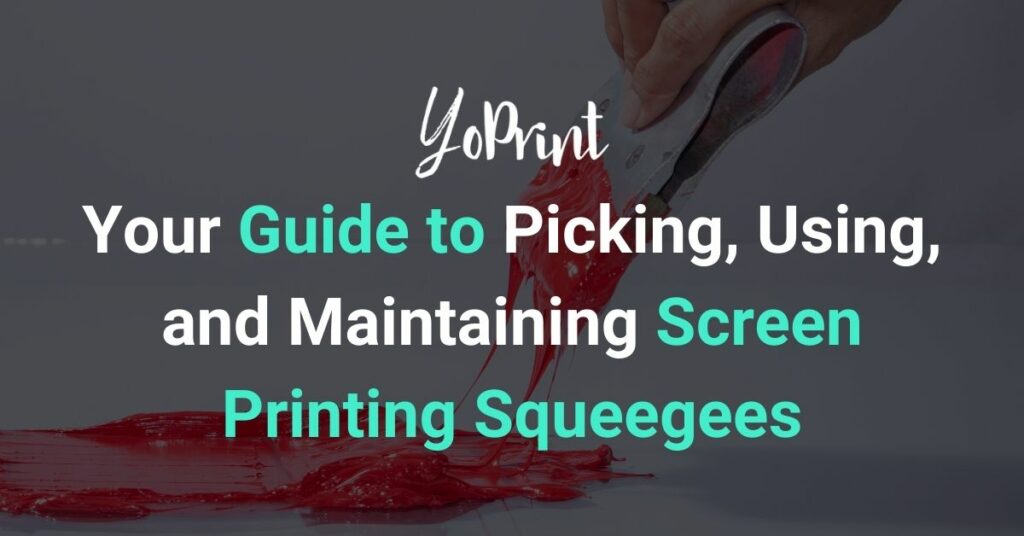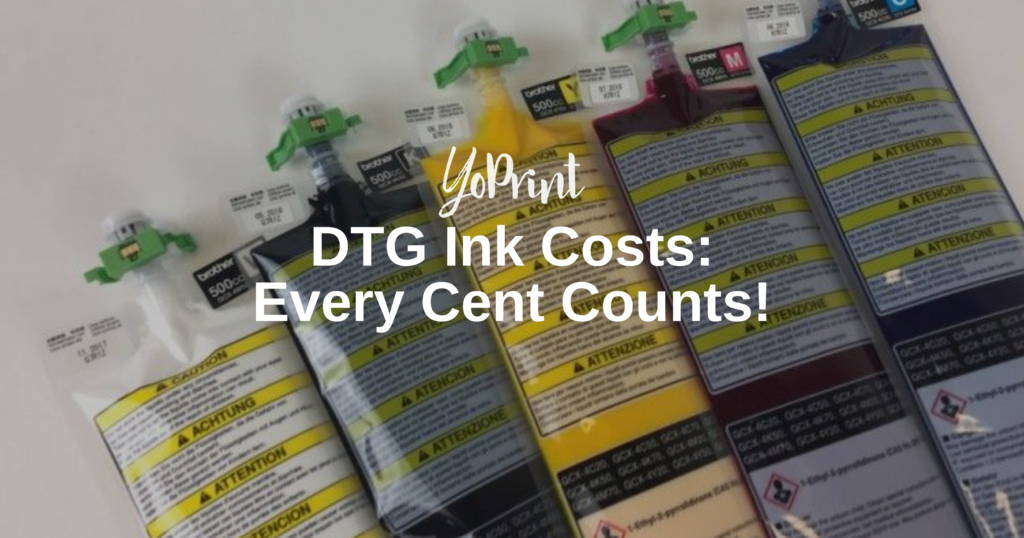Screen printing squeegees are one of the most important tools in screen printing. They are used to apply ink through a mesh or screen onto a garment or substrate, efficiently spreading it to achieve desired designs and print on fabric and some other materials.
The manner of use and maintenance greatly influence your printing work quality. Therefore, if you are a screen-printing business owner, you must know how to select from the sheer variety available, use them appropriately when needed, and properly maintain them to ensure optimum functionality in the long run. This article provides an extensive guide to this effect.
Squeegee Handles
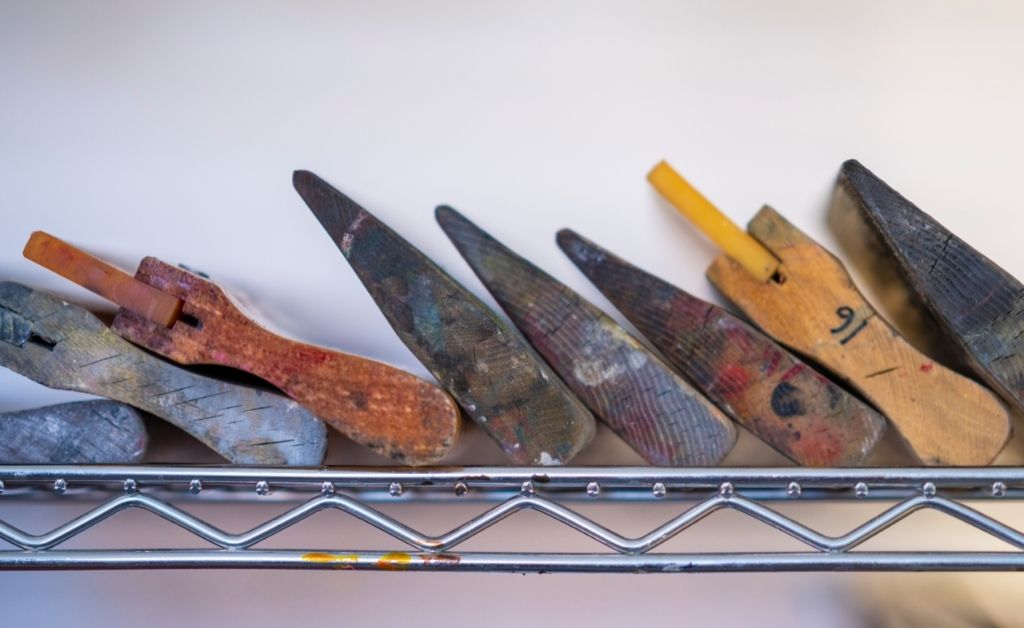
Screen printing squeegee handles are often available in wooden and aluminum designs. Each type offers a unique mix of physical properties that may appeal to different people.
Wooden handles are less pricey, more comfortable to use, and are pretty weighty, so they are relatively more helpful in manual printing. However, they tend to stain, although it doesn’t affect the quality of the work.
On the other hand, aluminum handles are lightweight and easier to clean, and of course, do not stain. Aluminum handles are also suited for automatic presses.
Some squeegee handles are available in ergonomic designs, such that they ensure ease of use and user satisfaction while maintaining optimum efficiency. Different handle heights are also available. Most designs often fall within the 4-5″ range. However, it is not unusual to find sizes such as 13″ on the far end of the spectrum.
Some designs, usually aluminum ones, come with the option to screw on during use, while some are attached with clips. These two designs make for easy replacement of squeegees during use, compared to simpler designs that may require squeegees to be glued. However, the relatively secure attachment and the possible aesthetic appeal may come at the cost of some extra change.
Squeegee Blade Materials
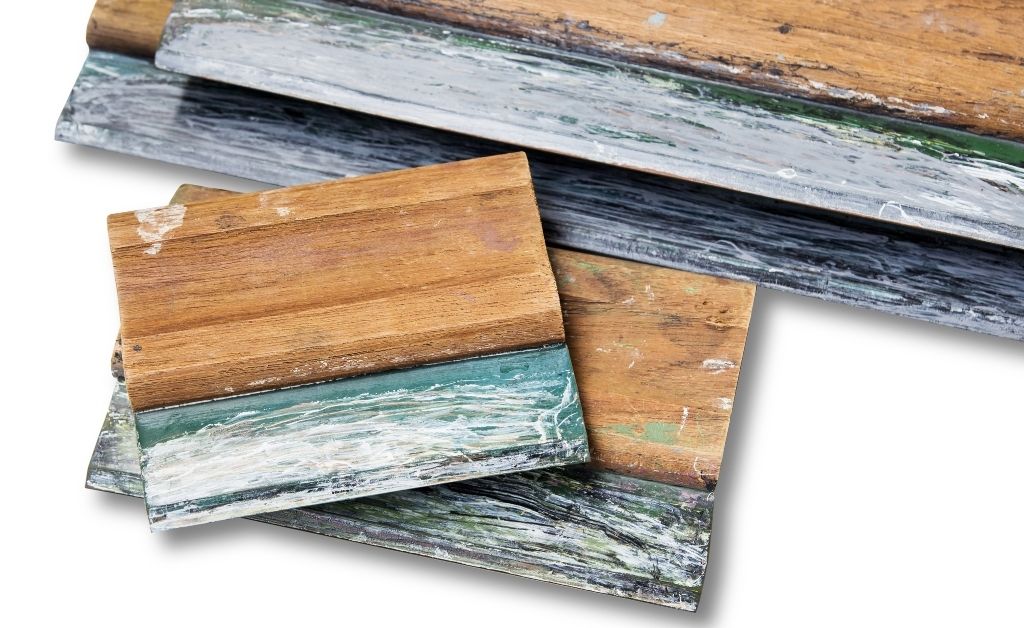
Squeegee materials are available in rubber, neoprene, and polyurethane designs.
Blades made of polyurethane – a composite material consisting of polymer units linked by urethane groups, are regarded as the most durable squeegee material you will find. They are more resistant to abrasion than the others.
Rubber blades can be purchased at lesser prices compared to polyurethane, but their cheapness often comes at the cost of lower durability and resistance to abrasion.
Neoprene – a synthetic polymer, regarded as an upgrade to rubber (particularly in weather and heat resistance), offers a higher degree of durability than rubber but is inferior in quality to polyurethane blades. Neoprene products often cost more than rubber products, as they are synthetic and of higher quality.
A roll of polyurethane squeegee blade may go for as much as $40, while a rubber roll of similar specifications may peak at $30.
Neoprene blades fall somewhere in the middle of the spectrum. Some manufacturers sell at lower prices, but there is almost always a reasonable price margin between rubber and polyurethane blades of the exact specifications.
Squeegee Length
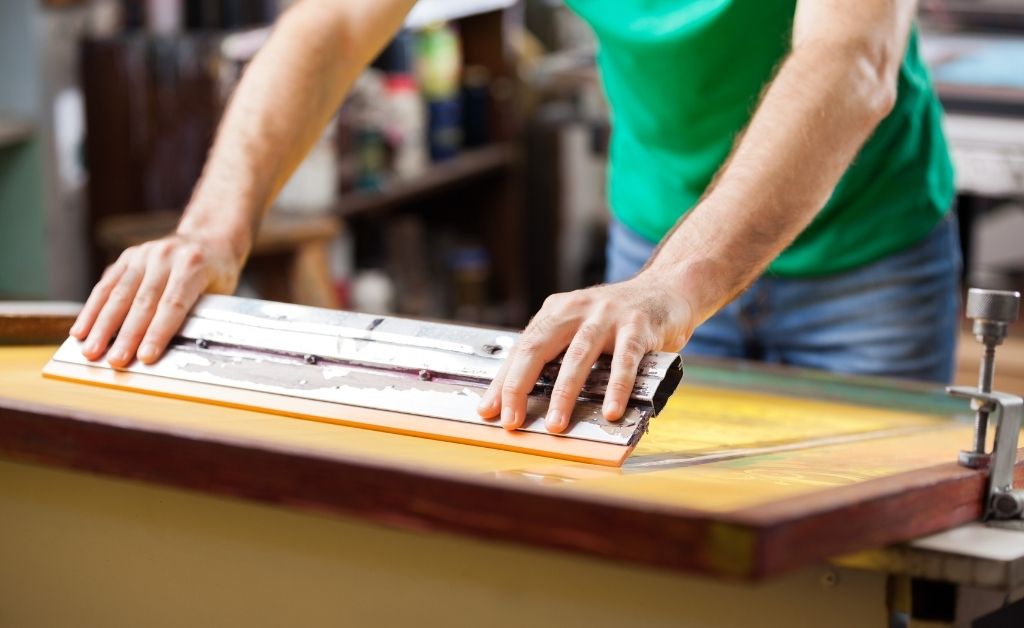
Squeegee blade lengths vary from lengths less than 6″ to 70″ or more. When purchasing a screen-printing squeegee, you should consider the squeegee’s length for printing work.
You should ensure that the width of the screen and that of the print/design are taken into account and that it corresponds with the squeegee length – and probably exceeds it by half of an inch, for the best results during printing jobs. As the pressure is mainly exerted on the central area, the edges are smudged or blurred if the length of the squeegee is too small.
Durometer
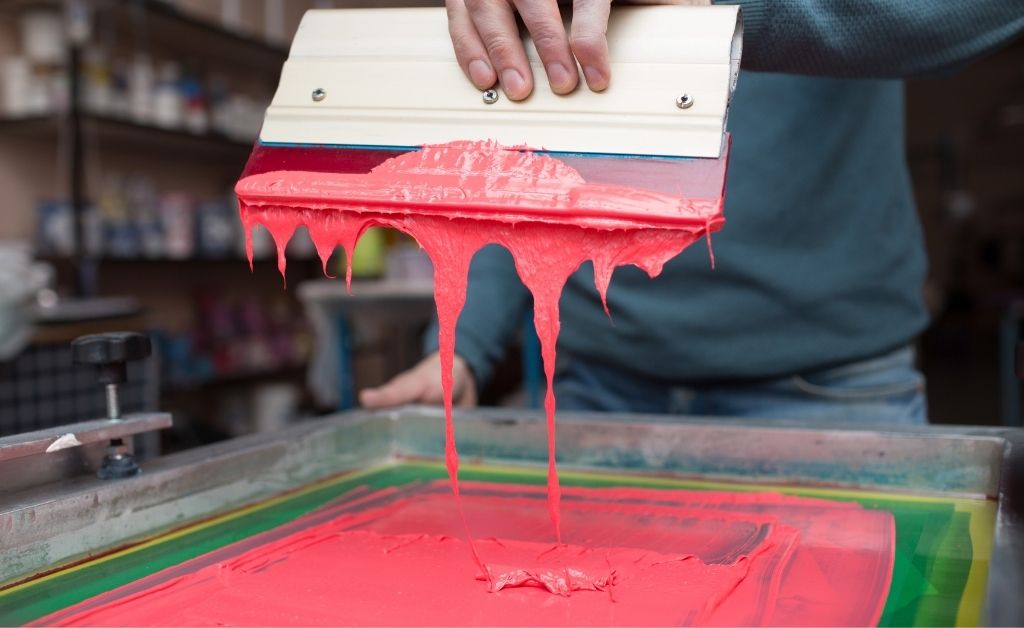
A durometer measures how hard, firm, and flexible a screen printing squeegee is and determines how much ink it deposits. The higher the number, the harder the squeegee is, and vice-versa.
For example, a 60 durometer Squeegee is softer and has thicker ink deposits than, say, a 90 durometer squeegee.
Higher durometer squeegees (e.g., 80, 90) are best suited for delicate and highly-detailed designs or prints on clothing.
It’s worth noting that higher durometer squeegees are suitable for automatic presses. This is because they can withstand the higher friction that comes from being used on a high-speed automatic press – thanks to their durability.
Lower durometer squeegees (e.g., 50 to 60), on the other hand, are often used for thick, less detailed imprinting, as well as special effects such as glitters and shimmer, among others.
Different ratings are labeled with different colors for better identification, depending on the manufacturer, and should be noted during selection.
Of the array of squeegees available, 70 durometer squeegees sit at a “sweet spot” that makes them the most versatile lot, suitable for spot colors and halftones. This makes them the most popular choice for many printing choices.
Edge Profile
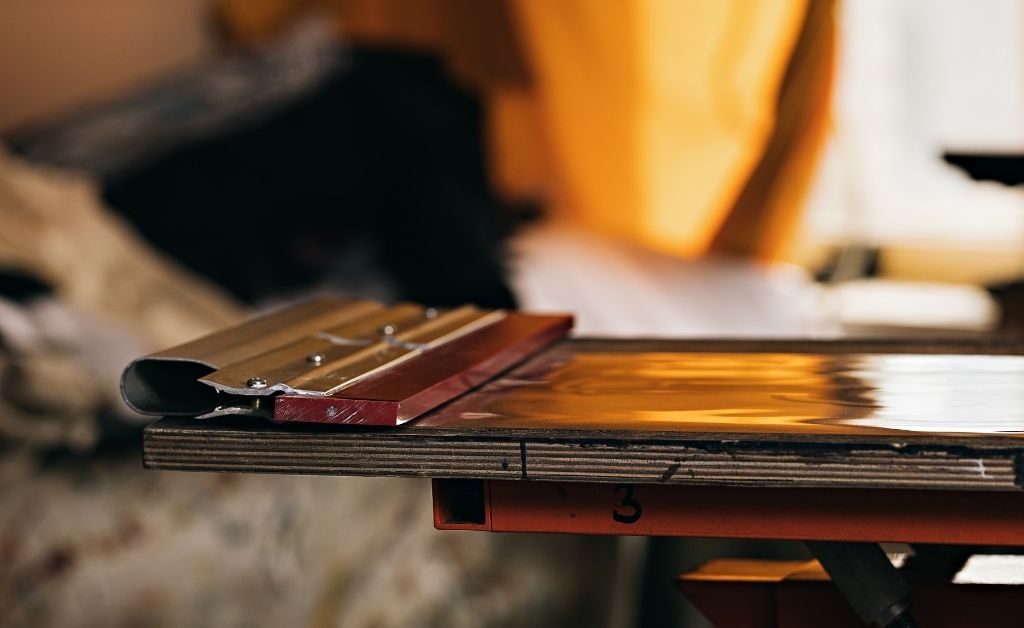
The edge profile refers to the cross-sectional shape of the blade. It determines how well the squeegee deposits ink on some substrates and how thick the deposits may be. Usually, the sharper it is, the less ink is deposited.
Thus, the edge profile determines the manner of application. Some of the edge profiles include:-
- Square/rectangular profiles with sharp edges.
- Square/rectangular profiles with rounded edges.
- Single beveled (with a flat tip).
- Single beveled (with a sharp tip).
- Double beveled (with a sharp tip).
- Double beveled (with flat tip).
- Round profiles with no edges.
- H-shaped.
They may be found in different durometers, further broadening the array of edge profiles.
Square profiles are perhaps the most common and are suited for printing on flat, even surfaces with standard plastisol and water-based inks.
Rounded profiles are handy in the garment industry and are best suited for heavy ink deposits as they push more ink than the ‘standard’ squeegee blades. They are used for gels and puff inks.
Beveled profiles are suited for printing on uneven and somewhat rounded surfaces. In addition, they can be used for heavy solids. They are also used in high-speed automated machines. These applications are due to the sharpness of the edge and the angle at which it prints during use.
Multi-Durometer Squeegees
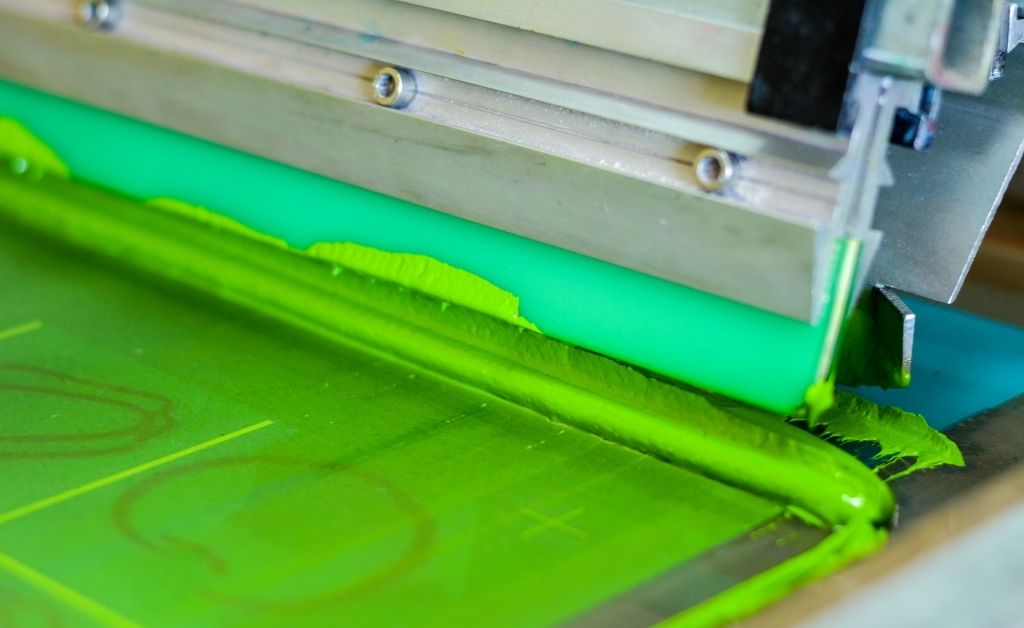
Multi-durometer squeegees are composite squeegees, usually of two or three squeegee blades with varying durometer ratings.
They often go for about double the price of single blades and are particularly suitable for printing jobs that require a mix of fine, highly detailed print or designs and the opposite.
An example is a 60-90-60 multi durometer squeegee. The harder blade supports the others, prevents bending, and corrects angulation during use. Triple durometer squeegees are particularly suitable for four-color process work and fine halftones. They’ve definitely got their pros, but their cons are that they might be more demanding in maintenance.
Fiberglass, a part of some composite squeegees, is often difficult to sharpen. In addition, when composite squeegees are composed of more than one material, they create problems for sanding belts and grinding wheels.
Maintaining Squeegees
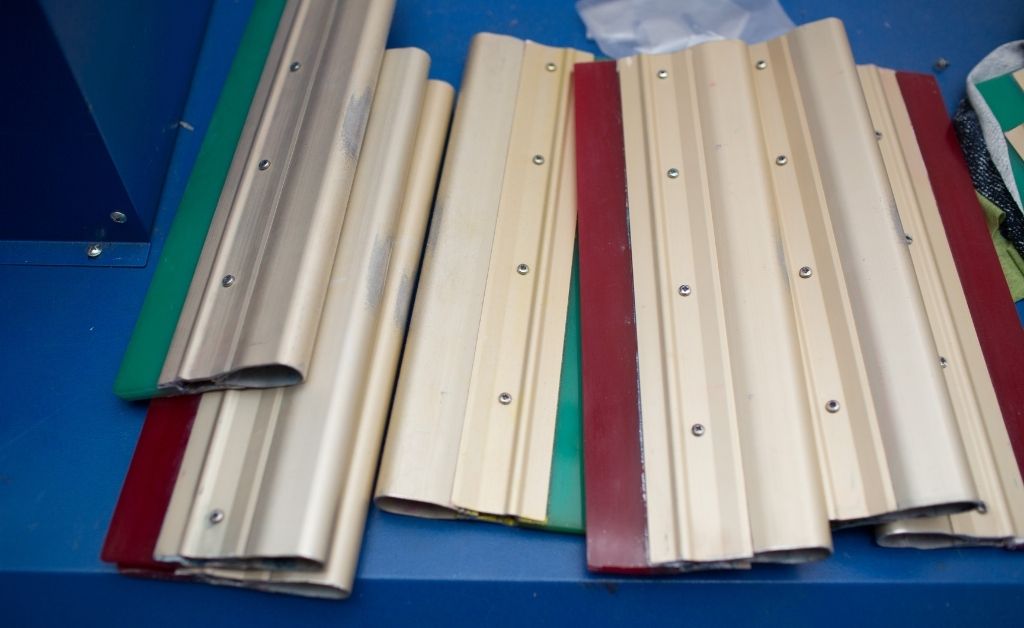
Like most other equipment, squeegees require proper maintenance to keep functioning optimally and avoid costly, untimely compromise of function in the long run.
The most common causes of breakdown are friction and prolonged abrasion. Squeegees also tend to swell and soften too much when used for too long.
The Role of Ink in Squeegee Abrasion
Ink should be cleaned off the squeegee as soon as you are through with it. Remnants from a previous job can compromise subsequent ones. Besides, it could cause chemical degradation and damage in the long run. You will want to avoid these at all costs.
In addition, you should use harder and more durable squeegees when using UV inks as they deteriorate much slower.
Freshly cleaned screen printing squeegees should be allowed to lay unused for a day or two before being used again for best results. Switching between squeegees is also beneficial because it eases the strain on each squeegee and slows down their deterioration. Squeegees should be laid out flat when not in use or storage – even as soon as they are received from the manufacturer.
Sharpen Blades
As uneven placements and angulation during prolonged usage blunt them eventually, keeping your squeegee blades sharp is essential.
A dull-tipped squeegee uses more ink than usual (and thus wastes it) than a consistently sharpened one. Also, it reduces print quality and causes the strain of extra set-ups during use, and in turn, wastes time.
There is a limit to how many times squeegees can be sharpened because the height (also known as its free height) is slightly reduced with every sharpening. If it gets too short, it loses its efficiency.
When fixed into the handle, a squeegee that has been trimmed a tad too much will have less distance between the tip of the handle and its tip. This distance affects the thickness of the ink deposited. The wider this distance is, the “softer” the edge is.
When this distance is too short, the edge is not as “soft” as it is supposed to be. It doesn’t deposit ink well and causes printing gaps during use.
Sharpening may be carried out via a variety of means. They include diamond wheels, grinding wheels, rotating blades, hot knives, cold cutting blades, and belt sanders.
Some of these methods work well for some squeegees more than others. It would be best to consider the physical properties of your squeegee blades before subjecting them to some of these processes.
Storage
Squeegees should be stored at temperatures of 60-70°F. Storing below this can reduce their hardness. In addition, they may lose their structural integrity when subject to very high ambient temperatures.
Conclusion
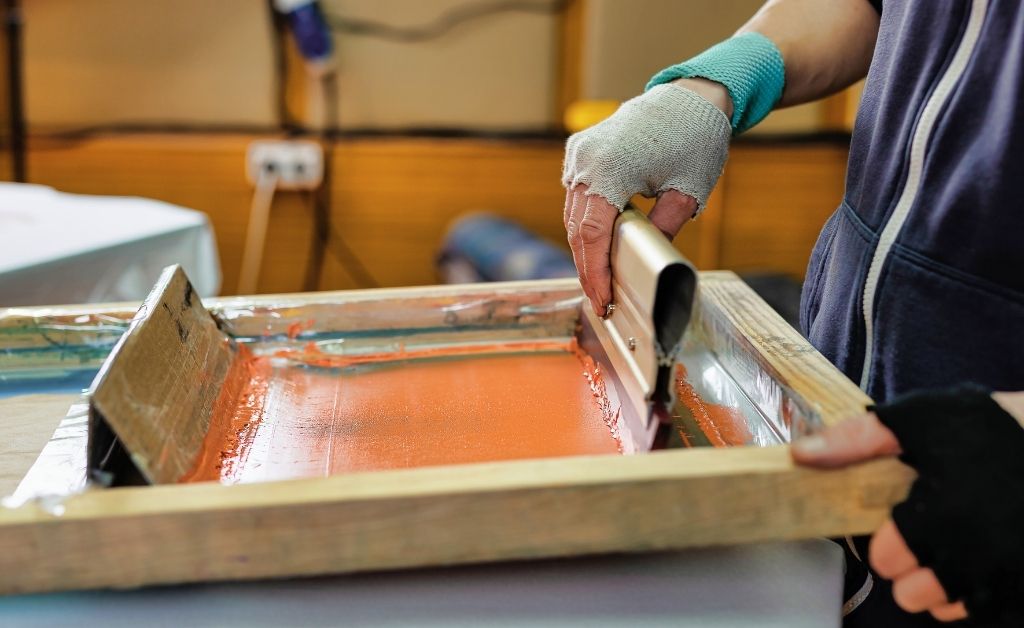
Have a Collection to Rotate Through: Due to their indispensability and the need for proper maintenance, you need to have a collection of squeegees with which you can rotate during work. You should have different squeegees that work different jobs, as well as have enough squeegees that you can let used squeegees rest for up to 48 hours.
Polyurethan Blades Only: Compared to the other blades, polyurethane remains the best blade choice due to its impressive physical properties. It’s the industry standard and is really the only blade you should be getting. The only benefit of the other blade materials is cost, but it’s at the expense of quality and durability. Take costs out of your mind and get polyurethane blades.
Choosing Handles: This is a bit more subjective. Choosing a handle depends on comfort and ease of use, so you have a wide array of options if you’re printing manually. However, aluminum handles are best suited if it solely boils down to an automatic press.
Durometer and Edge Profiles: A 70 durometer is the industry standard that works for lots of prints, so it’d be a good idea to get some 70 durometer blades. Aside from that, your choices for these are determined by the nature of the ink and the design to be printed. For example, a dot work design would do better with a higher durometer squeegee than a design with block letters. Whereas a design requiring puff inks would work best with a rounded squeegee.
Do note that before you fully commit a certain squeegee to a particular print, you should run a test for the best achievable results. Check if your choice of squeegee prints the details well and if it deposits the right amount of ink.
Finally, remember that proper storage and maintenance are essential. Pay attention to storage temperature, time off the press, and cleaning your squeegees.
Sticking to all these would allow you to make the best of your screen printing process and render high-quality services to your customers.
